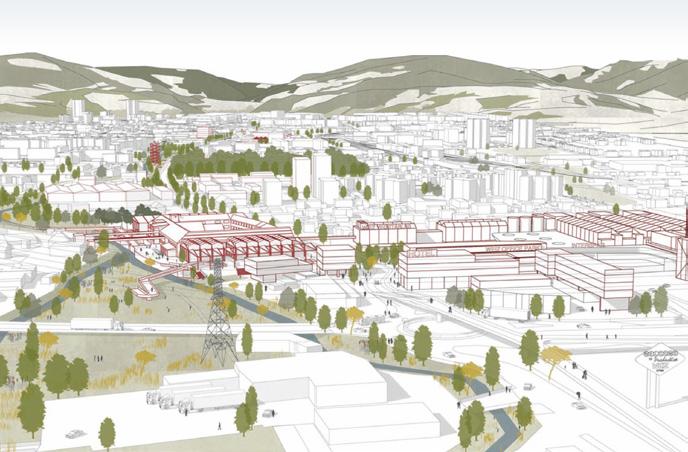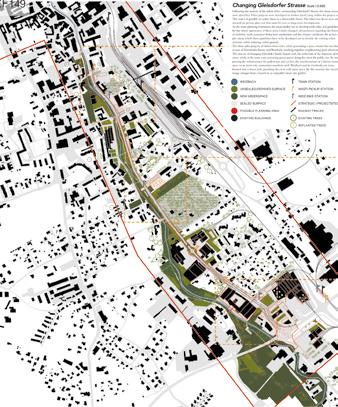
1 minute read
Runner-Up – Weiz Archipelago
Weiz Archipelago
AUTHOR(S) — Sebastian Sattlegger (AT), Bernhard Mayer (AT), Architects; Clara Linsmeier (AT), Student in Architecture TEAM POINT OF VIEW — The city of Weiz is situated in the productive landscape of Weiz-Gleisdorf, a complex system of diverse spaces, demanding a holistic planning approach. With the construction of the new mobility axis (ODF), Gleisdorfer Strasse loses its function as the city’s main transit route. This change in meaning has to be seen as an opportunity for the contiguous neighbourhoods. No longer a transit space, the area can be tackled and transformed through a set of emerging topics. The creation of public space is a starting point for future development. The goal of this process is to create a manifold part of town, where the neighbourhoods are connected by two linear elements: a transformed street and streetscape, and a continuous park along Weizbach. Thereby this area takes a special role in the productive landscape. JURY POINT OF VIEW — The project presents an analysis of the existing heterogeneous urban fabric through the atlas of islands. The project is understood as an urban planning proposal on a long-term scale, with a broader focus. Archipelago’s strength is its dealing with nature and the southern part of the project area. There, the emphasis on the flooding issue especially becomes apparent and is formulated as an integral part of the project.
Advertisement
WEIZ (AT) — RUNNER-UP
CONTACT — Afrikanergasse 14/11, 1020 Wien (AT) +43 6507874761

info@sml.wien / www.sml.wien
1/ CHANGING METABOLISM
A new balance must be found between the relations, processes, flows and multiple forces of the sites that are large and contain a variety of agents (human and nonhuman) with long– and short-term cycles, and far-reaching ecological, economic and territorial implications.
1/ CHANGING METABOLISM
1/B From linear to circular economy
Characterized by a “linear”, obsolete or monofunctional economic approach, the site aspires to incorporate other resources and uses that create synergies and new potentials for interaction so that to create a circular system, catalysing flows and processes in a more integrative and efficient way.










